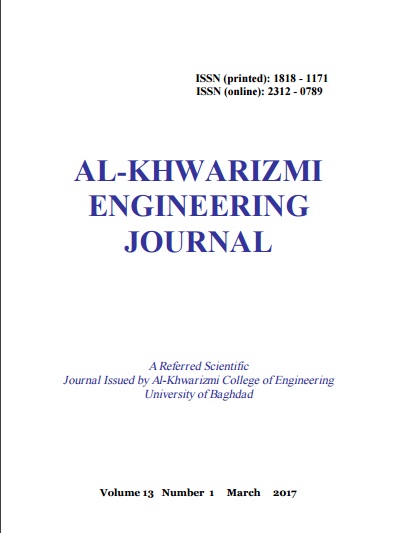Experimental and Numerical Research on Flow-Induced Vibration in Valves
DOI:
https://doi.org/10.22153/kej.2017.01.001Keywords:
Flow-induced vibration, vortex shedding, pressure pulsation, valve, finite element, ANSYS, fast Fourier transform (FFT).Abstract
Abstract
All central air conditioning systems contain piping system with various components, sizes, material, and layouts. If such systems in operating mode, the flow in piping system and its component such as valves can produce severe vibration due to some flow phenomenon’s. In this research, experimental measurements and numerical simulation are used to study the flow-induced vibration in valves. Computational fluid dynamics (CFD) concepts are included with one-way and two-way fluid-structure interaction concepts by using finite element software Package (ANSYS 14.57). Detection analysis is performed on flow characteristics under operation conditions and relations with structural vibration. Most of real geometrical, operational, and boundary conditions are simulated to obtain best similarity with real operation conditions. Comparisons performed between experimental data and numerical results (one-way and two-way simulation) to verify the results. The main conclusion was drawn from the study that the dominant source of vibration for valve is the water pulsation in addition to amount of water hammering. In addition, the main source of water pulsation in globe valve is the vortex shedding and pressure difference between upstream and downstream of valve. The vibration amplitude was increased with increasing flow rate until to be maximum when the flow rate around 30% and then decreased until flow rate reaches to around 85% and then trends to be constant.
Keywords: Flow-induced vibration, vortex shedding, pressure pulsation, valve, finite element, ANSYS, fast Fourier transform (FFT).
Downloads
Downloads
Published
Issue
Section
License
Copyright: Open Access authors retain the copyrights of their papers, and all open access articles are distributed under the terms of the Creative Commons Attribution License, which permits unrestricted use, distribution, and reproduction in any medium, provided that the original work is properly cited. The use of general descriptive names, trade names, trademarks, and so forth in this publication, even if not specifically identified, does not imply that these names are not protected by the relevant laws and regulations. While the advice and information in this journal are believed to be true and accurate on the date of its going to press, neither the authors, the editors, nor the publisher can accept any legal responsibility for any errors or omissions that may be made. The publisher makes no warranty, express or implied, with respect to the material contained herein.
















